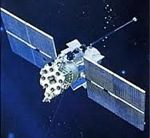

“The biggest boost to last year’s plan is made by the funding for the global navigation system GLONASS. Currently, Roscosmos is working on a new federal target program for the development of GLONASS between 2012 and 2020. Its basic parameters and funding are currently being agreed on by the Finance Ministry and the Ministry of Economic Development. Nevertheless, Roscosmos has already informed the government that, next year, the development of the navigation system will require 42.344 billion rubles (about $2 billion),” reported The Russian Space Agency.
This request is not unexpected. The GLONASS satellite navigation is now fully operational and will demand a regular budget to maintain services, develop applications, conduct further research and to continue additional launches.
The government was asked to fund the satellite navigation program in 2008 at double the amount for the 2009-11 period. At that time, Vladmir Putin supported the program. In 2010 the program was funded with $920 million initially reported GLONASS News to be followed with a reported $3.9 billion in 2011.
A comparison of budgets between GLONASS and the European GALILEO system has previously been made. For Russia – “29% of the civilian Russian space budget is for the GLONASS navigation satellite system which is half the money needed. The other half is payed for by the military. GPS in contrast is being fully payed by the U.S. military. 11% of ESA’s budget is for navigation satellites which is part of a larger public/private financing scheme,” said SciLogs. Total build and launch costs for GALILEO are expected to approach EUR 7 billion by 2019.
Because the Russian Space Agency is heavily involved in the manned space station project, nearly half o fthe annual requested budget is assigned to support that mission. This may help to explain why the space station is proposed to be de-orbited.
What does all of this mean to the average person in the field or business who needs to decide on GNSS? It means that Russia would be well advised to continue support GLONASS, since many applications are now in planning and development phases based on GNSS. Many expect that Russia will continue to support the system as it has already indicated that it is a priority. From a Russian perspective alone, it offers immense opportunities for infrastructure investment in rail, transport, energy and marine applications.
